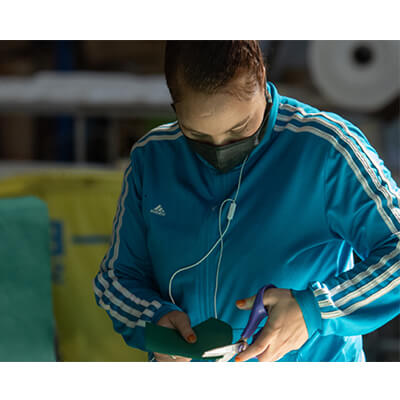As 2021 unfolds, packaging manufacturers are slowly beginning to make the transition back to more normal attendance and paid-time-off policies. Hiring processes like onboarding and training, which many companies neglected during the pandemic, may need to be revitalised and restructured.
Just this past week, we talked with a senior executive from a manufacturer of food packaging about their labor issues last year and plans for 2021. Although they followed the recommended guidelines and kept their workforce extremely safe, they struggled with labor shortages because people were caring for family members, afraid to come to work or potentially exposed to the virus and had to stay home in quarantine. He said they have worked hard to get people back to work, including wage increases, strict cleaning protocols and social distancing, but expect their labor challenges to continue.
In a recent article, we discussed some of the human resource challenges currently confronting the European packaging industry. I want to explore these issues a bit more, and link them to another recent TBM article about the connection between superior human capital management and its impact on operational performance and improvement.
Keeping people productive during this pandemic means keeping them safe and healthy. Until vaccines are widely distributed and administered, heightened workplace safety will require following recommended health protocols around ventilation and physical separation, as well as human resource policies that don’t penalise people for staying home when they are unwell.
Before the pandemic, especially in more developed countries, manufacturers had been managing a chronic labor shortage. With the higher rates of unemployment today, the urgency of the labor shortage problem has receded temporarily, but it will never go away. Finding, hiring and keeping the best talent at every level—executive, managers, supervisors, technical specialists and the shop floor—will always require extra effort and a well-executed HR strategy.
For this reason—just like every core business process—HR performance needs to be thoroughly measured and analysed. These metrics include:
- Absenteeism
- Attrition and retention by department manager, production line and shift
To improve human capital management manufacturers cannot focus on just one area, like onboarding. The entire process needs to be analysed and optimised.
Retention Starts at the Top of the Talent Funnel
Keeping good employees starts with talent acquisition. This includes clear communication of job requirements and performance expectations, and rigorously vetting candidates. Training is another key activity that has a big impact on retention. Over the past year we’ve seen some clients expand their use of point-of-use video instruction to reduce personal contact and deliver training where and when it’s most needed.
The factory’s culture heavily influences absenteeism and retention rates. Regardless of the corporate mission, culture and leadership messages—as anyone who has ever had a “bad boss” knows—the factory-level culture can vary significantly within a company depending upon individual management capabilities and styles.
In any size organisation, culture is a function of management practices and daily behavior. Plant managers need to model effective behavior and practices. These practices include daily board walks, leader standard work, kata coaching, layered audits and responding quickly to abnormalities. Management behavior should reflect a problem-solving mindset that does not point blame and focuses energy on fixing broken processes by getting at root causes.
Institutionalising disciplined daily management practices will eliminate performance leaks and thereby sustain forward progress. The effectiveness of any management system is determined by how well it supports the attainment of daily performance goals and how well daily activities are aligned with the company strategy and annual objectives.
Effective management systems use audits and constant coaching to ensure discipline and reinforce consistency. This might require periodic, formal assessments that rate each manager and business area on the degree to which they are using and following the desired practices.
As the global economy emerges from the pandemic in 2021, fixing poorly performing HR processes will have a big impact on achieving operational improvement targets and how quickly an organisation can move forward and grow.





